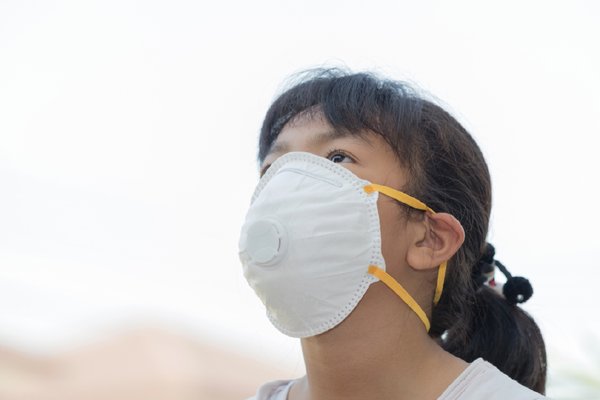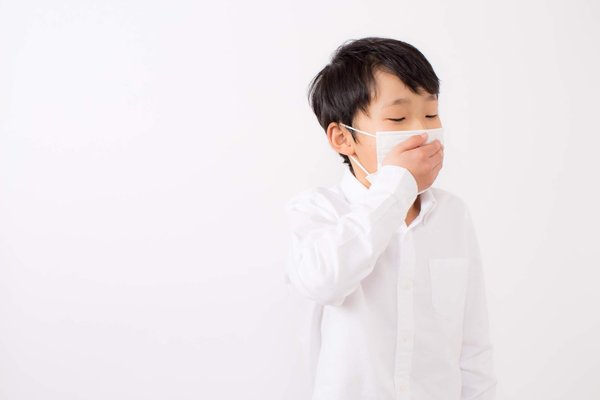Protecting Kids Against the Haze in Singapore
Contributed by: Dr Dave Ong

With the onset of haze in Singapore, there are certain precautions you and your little one should take to stay safe! Our paediatrician answers some commonly asked questions about haze so that you are better equipped to protect your little one.
1. What Does Haze Contain?
Haze contains air pollutants that can be harmful to your child’s health, including particulate matter and gases such as sulphur dioxide, ozone, nitrogen dioxide and carbon monoxide. In Singapore, the main air pollutant in the haze is particulate matter (diameter of less than 10 micrometres). These particles tend to persist in the atmosphere for weeks. Individually, these particles are not visible but in large quantities, they become visible. Long-term exposure to fine particulate matter which is usually smaller than 2.5 micrometres (PM2.5) leads to an even higher risk of heart and lung problems in both you and your children.2. How Does Haze Affect My Child?
Exposure to haze can affect the respiratory health of young children and it may result in the following:- Irritation of the eyes, nose and throat
- Increase in red/watery eyes (conjunctivitis)
- Runny or blocked nose (rhinitis)
- Prolonged cough and even wheezing
The most important step to reduce the risk of an asthma attack brought on by the haze is to ensure your child’s asthma is well-controlled in the first place.
Asthma is a chronic condition and requires regular reviews by your child’s doctor to ensure that it is under control. Medications used for asthma will include quick-relief medicines (relievers such as Salbutamol/Ventolin), which open up the airways during an asthma attack. Relievers should be readily available at all times in case of an attack, even if your child has not experienced any symptoms for some time. A large number of children with asthma also require preventer medication (e.g. Fluticasone/Flixotide or Seretide) which is used daily (even when there are no attacks) to reduce the inflammation in the airways, thereby helping to prevent future attacks.
It is important to ensure that the medicines are given correctly and that your child does not miss out on any doses prescribed by the doctor. Any known triggers for your child’s asthma (e.g. tobacco smoke, house dust mites or pets) should be avoided.
Finally, it is important that your child is kept well-hydrated by drinking plenty of water during the haze. If your child feels unwell, you should seek medical help promptly so that appropriate treatment can be started with minimal delay.
3. What Can I Do to Protect My Child During the Haze?
During periods of haze, the National Environment Agency (NEA) issues guidance on the type of physical activities that the public should carry out, depending on the air quality. This is based on the Pollutant Standards Index (PSI) levels. Children should stay indoors and minimise prolonged or strenuous outdoor activities if the PSI value is above 100, and avoid outdoor activities altogether if the PSI is in the hazardous range (defined as PSI value above 300). This is the most important precaution.4. What Can I Do to Improve and Maintain Air Quality in My House?
- Keep the doors and windows closed but open doors and windows periodically to ventilate enclosed areas when air quality improves.
- If air-conditioning is used, clean the filters regularly.
- Use wet cleaning methods to remove settled dust (e.g. by mopping or wiping).
- Consider portable air cleaners to reduce the amount of particulate matter indoors. These include ionisers, electronic air cleaners or air cleaners with High-Efficiency Particulate Air (HEPA) filters.
5. Should My Child Wear a Mask During the Haze?

Masks that offer protection against airborne particles include N95 masks and EN-149 masks. It is important to ensure the mask fits properly for optimal protection. Young children are often given normal surgical masks during the haze season as the standard N95 masks are too large for them. Unfortunately, surgical masks are not helpful in reducing exposure to fine particulate matter present in haze and do not provide a good seal.
Newer N95 mask models with micro-ventilators now come in child size options which are available in local pharmacies. However these masks only have certification for adult use, and there are currently no international certification standards for their use in children. Local clinical trials to establish safety in children using these newer mask models are currently underway. If you choose to use these masks for your child, be aware that they may make breathing more difficult with prolonged use, due to increased resistance to breathing and a reduction in the volume of air breathed. You should discontinue their use immediately if your child experiences any dizziness, difficulty breathing or discomfort.
SUMMARY
Exposure to the haze can irritate the eyes, nose and throat of children, causing symptoms like conjunctivitis, rhinitis, throat irritation, prolonged cough or wheezing. Haze particles can potentially worsen conditions like asthma or contribute to chronic lung diseases in children. Improve and maintain air quality at home by keeping doors and windows closed, cleaning air conditioning filters regularly and installing portable air cleaners to reduce particulate matter. If your child has asthma, ensure their condition is well-controlled to reduce the incidence of an asthma attack triggered by the haze.About Author
This article is written by Dr Dave Ong, who completed his MBBS in the National University of Singapore (NUS) in 2009. He received his post-graduate specialist training in Paediatric Medicine at the National University Health System (NUHS) and was awarded the combined Master of Medicine (Paediatric Medicine) and Membership of Royal College of Paediatrics and Child Health (MRCPCH, United Kingdom) in 2014. Dr Ong is competent in paediatric and neonatal resuscitations for acute emergencies and has a special interest in respiratory, ear-nose-throat (ENT) and skin conditions.
Kids Clinic @ Punggol
681 Punggol Drive #03-11 Oasis Terraces Singapore 820681
Tel: (65) 6817 8885
Tags:
- Parenting journey


